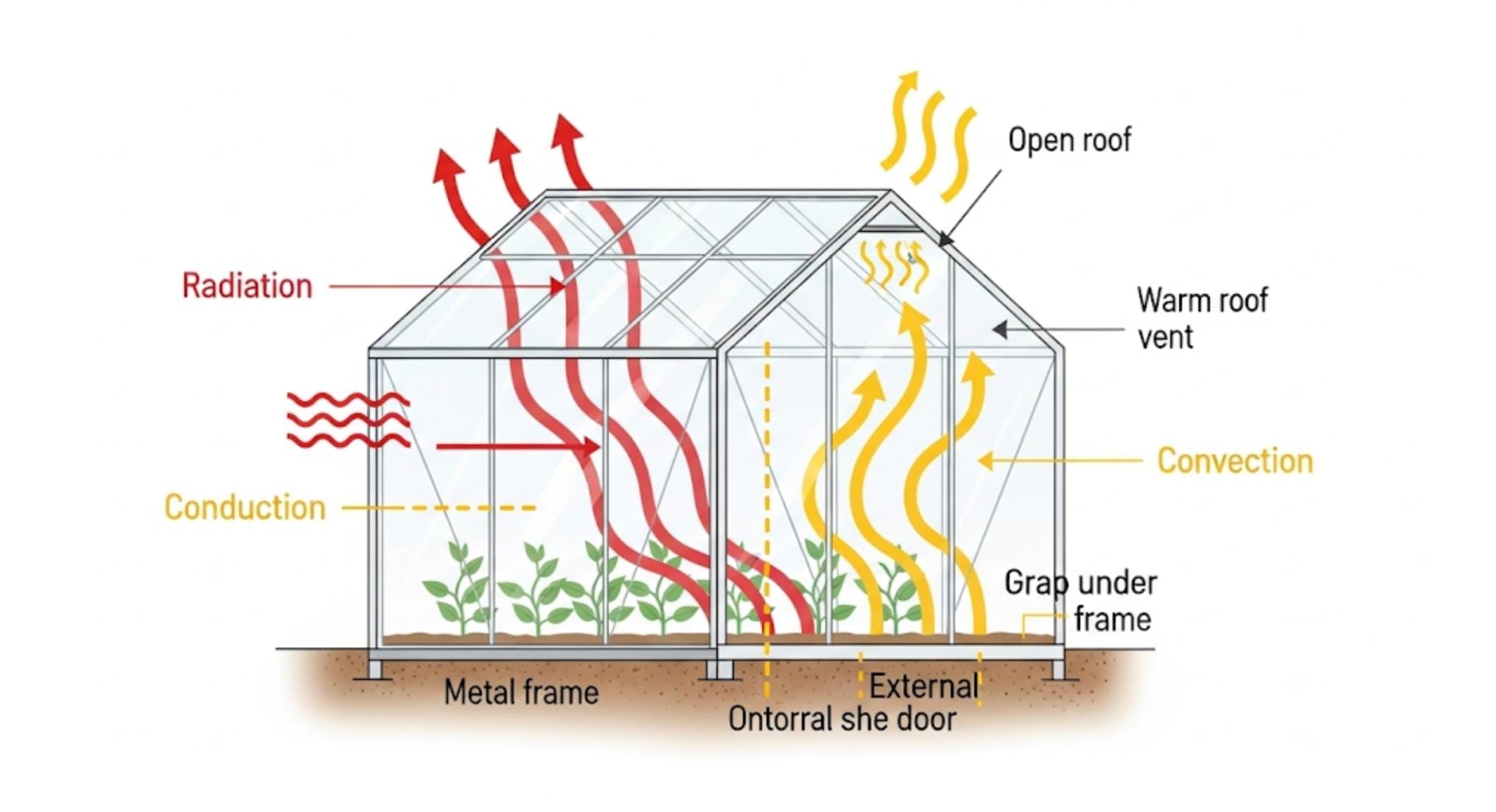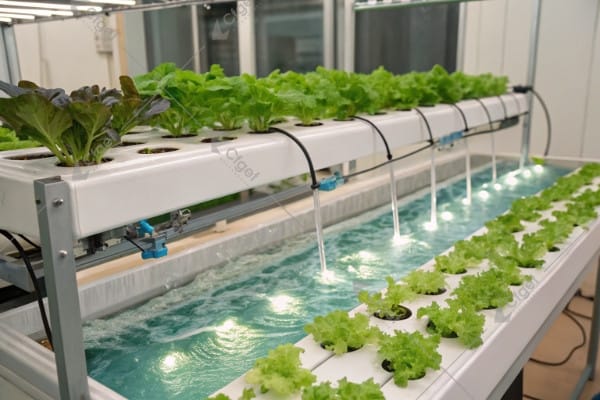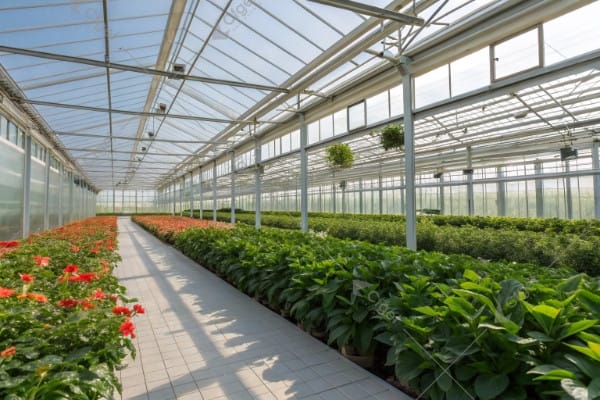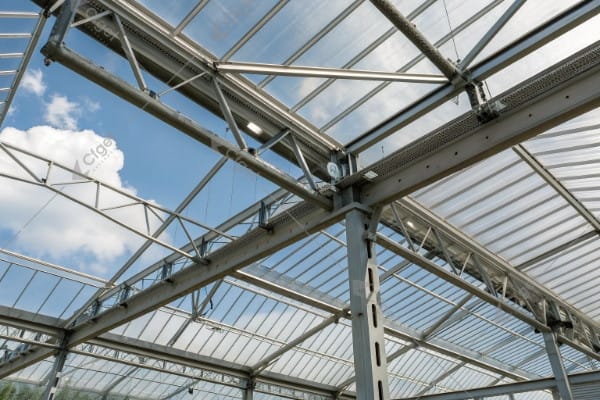Struggling with stunted plant growth and inconsistent yields? Poor light transmission and climate control may be sabotaging your greenhouse operation, wasting both time and investment on underperforming crops.
Glass greenhouses provide unmatched light transmission, durability, and climate control capability. While requiring higher initial investment, they deliver superior growing conditions, decades of service, and precision environmental management that maximizes productivity for serious commercial operations.
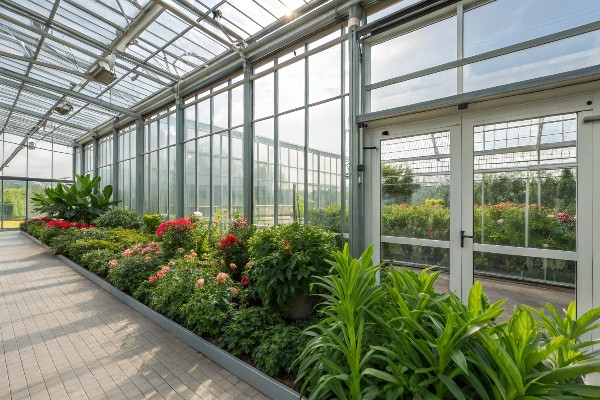
I’ve spent over two decades designing greenhouse systems across multiple continents, and one question comes up repeatedly from growers looking to upgrade their operations: "Is glass really worth the extra cost?" My answer is almost always yes – if you’re planning for the long term. Let me show you why glass continues to be the premier choice for serious greenhouse operations despite the availability of newer materials.
Don’t Miss:——Winter Greenhouse Heating Strategies: Keeping Your Plants Warm Efficiently?
You might like:——Why Glass Remains a Premier Choice for Greenhouse Glazing?
Maximizing Natural Light: The Primary Benefit of Glass Glazing?
Is your current greenhouse leaving your plants starving for light? Many growers watch helplessly as their crops stretch toward insufficient light, producing weak stems and disappointing yields that directly impact profitability.
Glass transmits over 90% of available sunlight compared to 80-85% for polycarbonate and even less for polyethylene coverings. This superior light transmission promotes faster growth, better flowering, and higher yields, especially during low-light winter months when every photon counts.

Light is the fundamental energy source for plant growth, and the transmission quality of glass remains unmatched among greenhouse covering materials. The molecular structure of glass creates a clarity that allows the full spectrum of light to pass through with minimal diffusion or filtering. This matters tremendously for plant development.
During my work on a commercial tomato operation in the Netherlands, we conducted side-by-side trials with identical crop varieties under glass and polycarbonate sections. The difference was striking – plants under glass consistently produced 12-15% higher yields due to enhanced photosynthetic activity. The light quality through glass also supports proper plant morphology, preventing the stretching and weakening that occurs when plants search for adequate light.
Modern horticultural glass has evolved significantly from earlier versions. Today’s greenhouse glass often includes low-iron formulations that further increase light transmission, anti-reflective coatings that reduce light bouncing off the surface, and diffusion treatments that spread light more evenly throughout the growing area. These advancements mean that during cloudy periods or winter months, glass maximizes every available bit of sunlight.
For growers in northern climates or areas with frequent overcast conditions, this light advantage becomes even more critical. I worked with a flower producer in Seattle who switched from twin-wall polycarbonate to glass and saw blooming times decrease by nearly two weeks during winter production cycles. The improved light conditions also enhanced flower color intensity and stem strength – qualities that translated directly to higher market prices.
Glass also maintains its light transmission properties longer than alternative materials. While polycarbonate and acrylic begin to yellow and degrade in UV exposure over time, reducing their light transmission, quality greenhouse glass maintains its clarity for decades with minimal reduction in light penetration. This consistent performance eliminates the gradual production decline that occurs as other covering materials age and become increasingly opaque.
Durability and Longevity: Why Glass Stands the Test of Time?
Do you find yourself constantly budgeting for covering replacement and repairs? The frequent replacement cycles of plastic coverings create operational disruptions, ongoing expenses, and frustrating growing schedule interruptions.
Quality greenhouse glass typically lasts 30+ years with proper installation and maintenance, compared to 10-15 years for polycarbonate and just 3-5 years for polyethylene films. This exceptional lifespan makes glass the most economical long-term option despite higher initial costs.

The durability of glass as a greenhouse covering material is truly remarkable when you consider the harsh conditions these structures endure. Modern greenhouse glass is typically tempered or "toughened" through a heating and rapid cooling process that increases its strength by 4-5 times compared to standard glass. This tempering also changes how glass breaks – instead of large, dangerous shards, it crumbles into small granular pieces that reduce injury risk.
I recently visited a glass greenhouse in central Spain that has been in continuous operation for 27 years. Despite exposure to intense summer heat, occasional hail, and even a minor earthquake, the original glass panels remain intact and functional. The owner explained that their maintenance routine is simple – annual cleaning and occasional inspection of seals and glazing bars. Their only panel replacements came after a severe hailstorm damaged about 5% of the roof panels. Compare this to neighboring plastic-covered structures that require complete recovering every 4-6 years.
Double-glazed glass systems take durability even further by incorporating two panes with an insulating air gap between them. During a project in Finland, I helped design a double-glazed greenhouse that has withstood winter snow loads and temperatures below -30°C for over 15 years without a single panel failure. The structure maintains excellent heat retention while standing up to the extreme environmental conditions that would quickly degrade or damage plastic coverings.
From a business perspective, this longevity transforms the economics of greenhouse operation. While the initial investment is undeniably higher, the amortized annual cost often works out lower than alternatives when calculated over the full lifespan of the structure. One commercial pepper grower I consulted for in Canada ran the numbers and found that despite the 2.4x higher initial cost of glass versus polycarbonate, the annual cost was actually 18% lower when factoring in replacement cycles and energy savings.
Glass also maintains structural integrity under the weight of environmental control systems. Modern commercial greenhouses often require substantial equipment for heating, cooling, supplemental lighting, and irrigation. The rigid, stable nature of glass accommodates these systems without sagging or distortion that can occur with flexible coverings. This stability helps preserve the operational efficiency of these critical systems throughout the greenhouse lifespan.
Aesthetics and Clarity: The Visual Appeal of Glass Greenhouses?
Are you stuck with a utilitarian, industrial-looking greenhouse that detracts from your property’s appearance? An unattractive growing structure can diminish both property value and the joy of your growing experience.
Glass greenhouses provide unmatched clarity and visual elegance that transform them from purely functional structures into architectural features. Their timeless appearance adds value to properties and creates stunning spaces that showcase your plants while impressing visitors and clients.
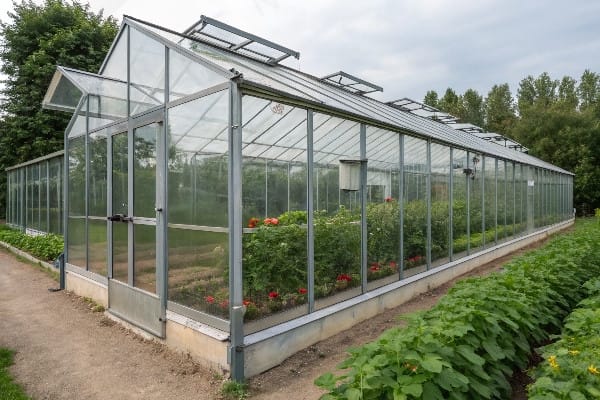
The aesthetic value of glass greenhouses1 extends far beyond superficial appearance – it creates an environment that enhances both the growing experience and the presentation of your operation. I’ve worked with numerous clients who initially approached greenhouse construction purely as a utilitarian project, only to discover that the visual impact of their glass structure became a significant business advantage.
One particularly memorable project was for a boutique herb grower supplying high-end restaurants in California. Their glass greenhouse became such a distinctive feature that chefs began visiting personally to select herbs, creating direct relationships that increased sales by over 30%. The crystal clarity of the glass provided an unobstructed view of the meticulously maintained herb beds, turning what could have been a simple production facility into a showpiece that told the story of their growing practices.
The architectural possibilities with glass are virtually unlimited. Unlike plastic coverings that are typically limited to curved or hoop designs, glass allows for dramatic roof pitches, vertical walls, decorative ridges, and custom shapes. For a research facility in Germany, we designed a glass structure with asymmetrical roof planes that not only created visual interest but also optimized light capture during winter months when the sun angle is lower. This functional beauty attracted additional research funding as the facility became a campus landmark.
Glass greenhouses also create exceptional interior atmospheres. The quality of light inside a glass greenhouse has a clarity and brilliance that simply can’t be matched by plastic alternatives. Plants appear more vibrant, colors more true, and the overall environment feels more natural and inviting. When I bring clients into different greenhouse structures for comparative tours, their reaction upon entering a well-designed glass greenhouse is invariably positive – they immediately sense the quality difference in both light and aesthetics.
From a marketing perspective, glass greenhouses provide compelling visual content that strengthens brand image. Many of our commercial clients feature their glass structures prominently in advertising materials, websites, and social media. The transparency and elegance of glass communicates quality, permanence, and attention to detail – attributes that customers associate with the crops grown within. One flower producer in Oregon reported that orders increased by 25% after redesigning their website to feature their new glass greenhouse operations.
For agritourism operations, garden centers, or any growing business that welcomes visitors, the visual appeal of glass creates spaces where people naturally want to linger. The pleasant environment encourages longer visits, increased purchases, and stronger customer connections. I’ve seen this effect transform struggling retail operations into destinations simply by upgrading from plastic to glass structures that elevate the shopping experience.
Is Glass the Right Investment for Your Greenhouse Project?
Does evaluating greenhouse materials leave you overwhelmed with conflicting information? Making the wrong selection can trap you in years of compromised growing conditions, unexpected maintenance costs, and missed production opportunities.
Glass greenhouses represent ideal investments for commercial operations, research facilities, and dedicated growers planning for 15+ years of use. Their superior performance and longevity offset higher initial costs, especially when growing high-value crops2, operating in extreme climates, or requiring precise environmental control.
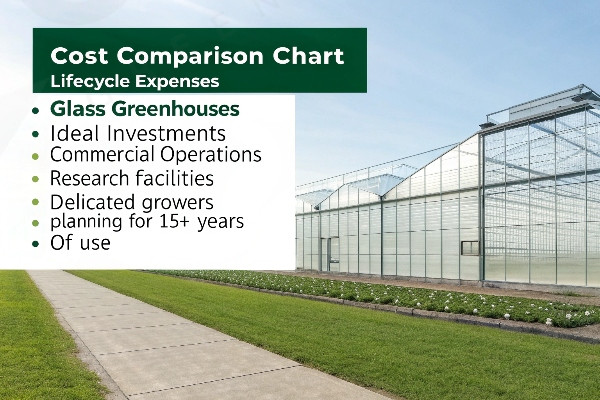
Determining whether glass is the right investment requires honest assessment of your specific situation and goals. Through decades of greenhouse design consulting, I’ve developed a framework to help growers make this critical decision that balances initial budget constraints against long-term operational objectives.
Commercial-scale production operations typically benefit most clearly from glass investments. When your business depends on predictable, high-quality yields year after year, the performance advantages of glass directly impact your bottom line. One vegetable producer I worked with in Arizona calculated that their glass greenhouse generated approximately $32 more revenue per square meter annually than their polycarbonate structures due to improved light conditions and more precise climate control. This difference meant their additional investment in glass was recovered in under four years.
Climate considerations play a major role in material selection. In regions with extreme weather events, glass offers superior protection when properly engineered. During a consultation in the Caribbean, I recommended glass for a commercial operation specifically because of hurricane resistance when installed in appropriate framing systems. While counterintuitive to some, properly installed tempered glass in engineered frames actually withstood category 3 hurricane conditions better than polycarbonate alternatives that tended to pull free from their fastening systems under sustained high winds.
Energy efficiency calculations often favor glass, particularly in cold climates. Double-glazed glass systems provide excellent insulation values that significantly reduce heating costs during winter months. For a research greenhouse in Minnesota, the annual heating cost reduction with double-glazed glass versus single-layer polycarbonate exceeded $4.50 per square foot – savings that rapidly accumulated over the structure’s lifespan. These energy considerations become increasingly important as fuel costs rise and environmental regulations tighten.
The type of crops you’re growing also influences the glass decision. High-value, light-sensitive crops like many ornamentals, certain vegetables, and cannabis particularly benefit from glass environments. Working with a medicinal cannabis producer, we documented significant improvements in cannabinoid profiles and consistency when production was moved from polycarbonate to glass structures due to the improved spectral quality of natural light transmission.
For operations where precise environmental control is critical, glass provides an ideal envelope. The stability and sealing capabilities of glass installations allow for tighter control of humidity, temperature, and CO2 levels. This precision becomes increasingly valuable as automation systems advance – the most sophisticated growing algorithms require consistent environmental conditions that are difficult to maintain in structures with higher air infiltration rates or covering materials that flex and create variable air volumes.
Initial budget constraints remain the primary reason growers choose alternatives to glass, and for some operations with shorter planning horizons, this may be appropriate. However, I encourage clients to calculate true lifecycle costs rather than focusing exclusively on initial investment. When properly analyzed over 20+ years of operation, glass frequently emerges as the most economical choice when all factors are considered.
Conclusion
Glass greenhouses deliver unmatched light transmission, exceptional durability, and superior climate control that justify their higher initial investment. For commercial growers seeking optimal conditions and decades of reliable service, glass remains the premier greenhouse covering solution.

